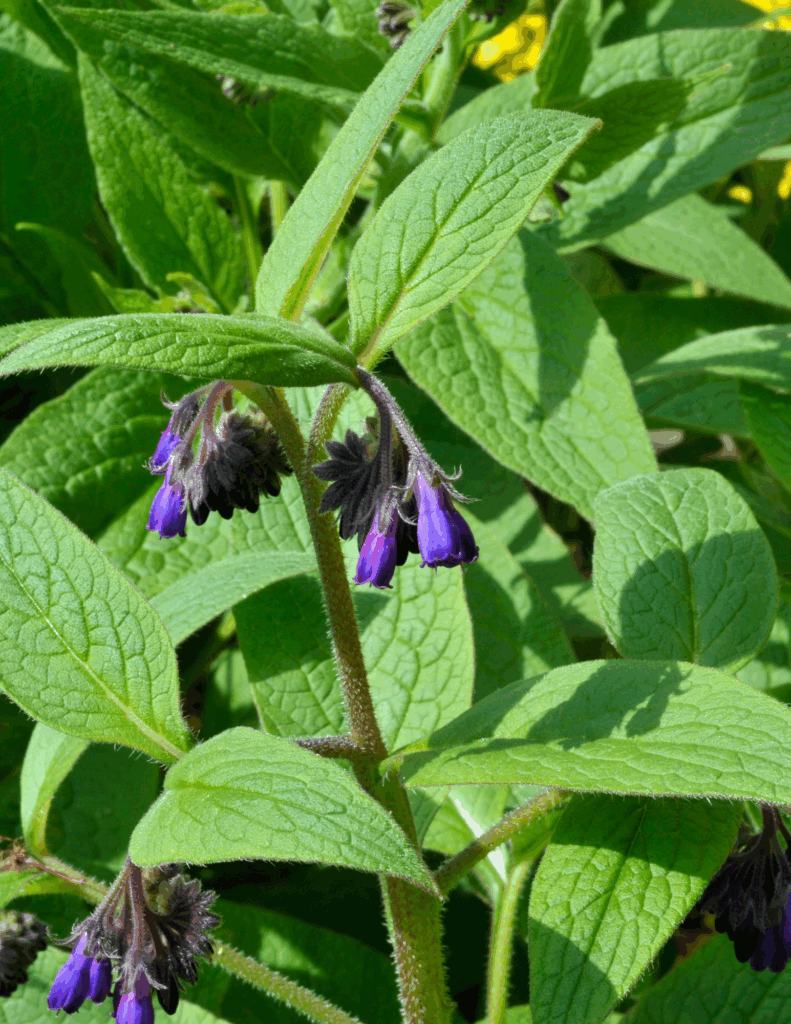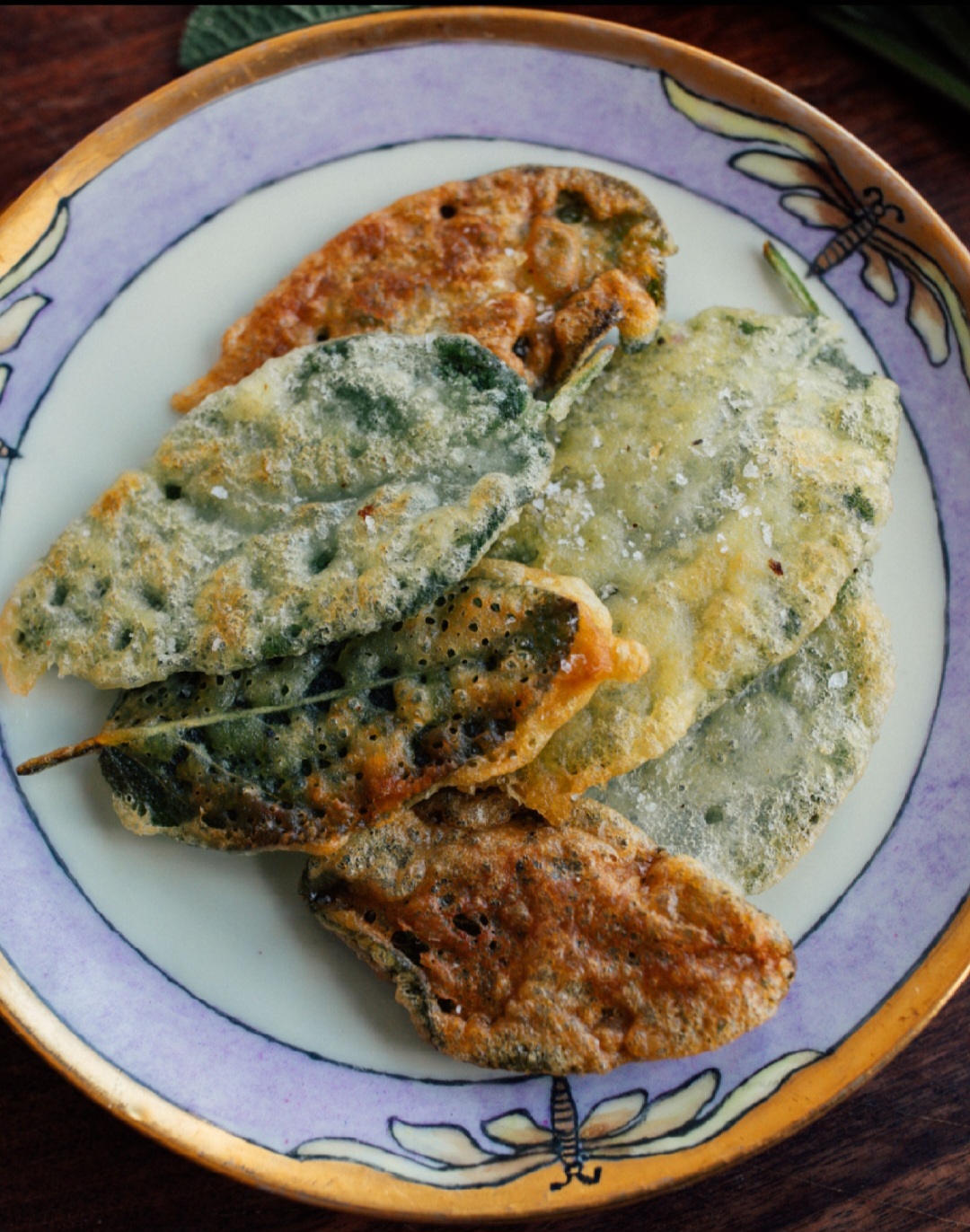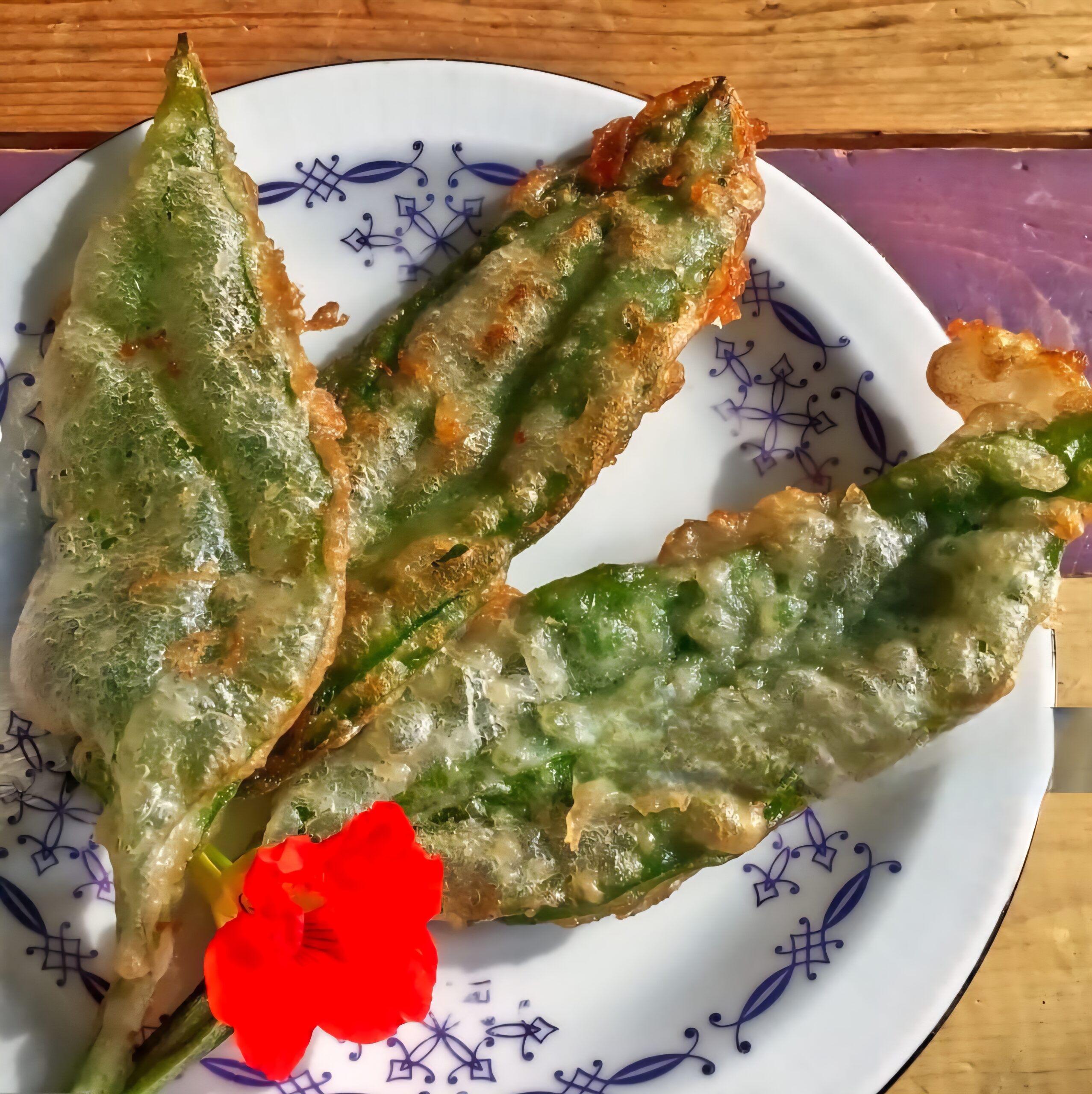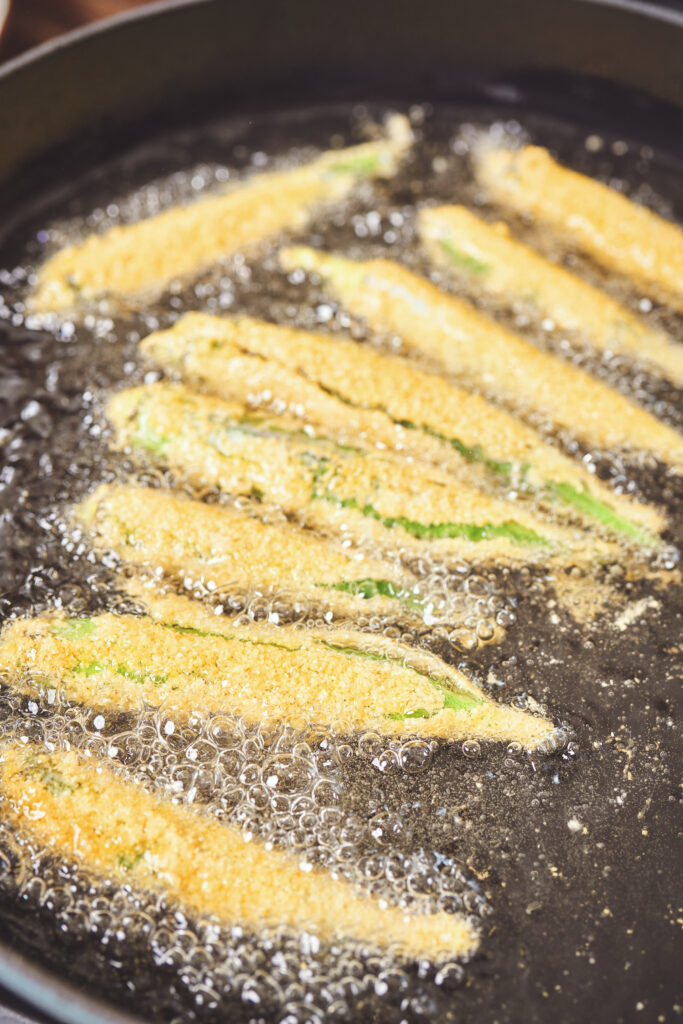Taste Of The Wild

Comfrey (Symphytum officinale) is a fast-growing perennial herb native to Europe and parts of Asia. It’s known for its large, hairy leaves and bell-shaped purple, blue, or white flowers. Comfrey thrives in moist, fertile soils and is commonly found in gardens and wild areas.
Traditionally, comfrey has been used in herbal medicine for its wound-healing and anti-inflammatory properties. It contains compounds like allantoin, which promotes cell regeneration, and rosmarinic acid, which reduces inflammation. Historically, comfrey was used to treat bruises, sprains, and broken bones, earning it the nickname “knitbone.”
Purchase our BoneKnitter Salve here.
Today modern herbalists use comfrey for many of the same reasons externally in salves, poultices, and ointments. But most no longer recommended to use it internally due to the presence of pyrrolizidine alkaloids (PAs), which can cause liver damage.

So is comfrey safe to eat?
Harmful effects attributed to herbs is usually because of in vitro or animal studies, which is the case for comfrey. Yet, documentation that demonstrates actions in vitro or in animals cannot always be replicated in vivo – i.e. in humans. Animals and humans are obviously not biologically the same. To give you an example, in the Hirono study, researchers found that feeding rats huge quantities of ground comfrey leaves and roots did them no good at all – especially the 2 week old baby rats. Out of 28 rats fed 8% of diet as dry weight comfrey, one showed a liver tumour at 600 days (a long life for a rat!).
This means, the average adult human would probably need to ingest 20,000 comfrey leaves to produce a comparative dose. Assuming 3 dried leaves of comfrey per cup of leaf tea, this equates to drinking 6,666 cups of tea. If you drank a cup of comfrey leaf tea every single day, it would take you over 18 years to reach this level of consumption!
One of the few actual human cases known of comfrey poisoning was a 47 year old woman who took comfrey in excess – a.k.a. overdosing. In this particular case, the woman was consuming excess amounts of comfrey tea (up to 10 cups daily), and taking pill supplements of comfrey for over thirteen years. No wonder she ended up with liver issues! Sadly for comfrey, this situation condemned the plant forever.
On the contrary, I cant help but wonder what the effects of 10 cans of Monster or Coca cola every day for 13 years would do to your liver? However, the proven harmful effects of these beverages doesn’t result in their ban. Strange right?
There are several species of comfrey plant but only a few are considered safe to consume. I eat common comfrey, Symphytum officinale (only the leaves) which rarely contains echimidine. Echimidine, considered to be the most toxic of comfrey PAs, is not found in common comfrey (Symphytum officinale). However, it is found in prickly comfrey (S. asperum Lepechin) and its hybrids with S. officinale including Russian comfrey (S. x uplandicum Nyman).
The difficulty nowadays is that common comfrey hybridises to Russian comfrey and some modern analysis shows echimidine appearing in common comfrey. This as far as I know, is not a huge concern in the United States yet, but is something to be cautious of if you are harvesting in Britain or Canada.
As long as you are a healthy individual with a healthy functioning liver, consuming comfrey in moderation is most likely fine. After all, I have been consuming the leaves my entire life and so far, I am still healthy. But if you are somebody that has prior health concerns or a liver condition, it is recommended not to consume this plant AT ALL. You also must be cautious about using it topically as well, because the PA’s could potentially absorb through the skin.

Comfrey Fritters
So now that we have cleared up the safety and precautions, let’s get to the recipe!! Make sure to harvest the young comfrey leaves from a pollutant free area.
INGREDIENTS
• Large bunch of fresh young comfrey leaves (Symphytum officinale)
• 1 cup all purpose flour
• 1 tbsp garlic powder
• 1 tbsp paprika
• 1/2 teaspoon pepper
• 2 tsp seasoned salt
• 1 large egg, lightly beaten
• 1 1/3 cups beer
• Fat for frying (or avocado oil) I personally prefer duck fat

INSTRUCTIONS
1. Mix all the ingredients (except the fat) together to create your batter. Once mixed, cover and place it in the refrigerator to get cold (at least 30 minutes prior to using). It will stick to the leaves better this way.
2. Wash the comfrey leaves and dry them off as good as you can. Leave the stems on so that you are able to turn the leaves during cooking.
3. Preheat the fat or oil in a large skillet on medium high heat. Take one comfrey leaf, holding it by the stem, and drag it through the batter. Allow the excess batter to drip off before placing it in the hot oil.
4. Repeat this process until your skillet is full but not crowded. Otherwise the batter and leaves will stick together. Allow the leaves to cook 1-3 minutes until golden brown, then turn then over and cook the other side few minutes.
5. Remove your leaves when they are crispy and golden brown and drain the grease by laying them on a paper towel.
Serve with a lemon wedge and dipping sauce of your choice, then enjoy!

Final Thought
Despite the fear that surround this plant, humans have been consuming and using comfrey for centuries. As with anything in life, poison always lies in the dose.
I personally consume comfrey fritter leaves, more as a snack than a meal. I also consume them in moderation and only when fresh ones are available, which is only about a month or so. Using comfrey, internally for medicinal reasons requires a different protocol. When you using comfrey, internally for medicinal reasons requires a different protocol which you can find here.
Again, if you’re someone that has liver issues or conditions do not consume or use comfrey. Pregnant nursing women should avoid. If you decide to consume this herb, do it in moderation. Always make sure to do your own research so that you can make the best informed decision for you and your own health.
Stay Wild
Sources Below
https://www.sciencedirect.com/science/article/abs/pii/S0165614702021065
https://pmc.ncbi.nlm.nih.gov/articles/PMC5894094/
https://eclecticschoolofherbalmedicine.com/wp-content/uploads/2025/03/The-comparative-toxicity-of-a-reduced-crude-comfrey-vs-pure-alkaloid-in-chicks-2.pdf
https://eclecticschoolofherbalmedicine.com/wp-content/uploads/2025/03/comfrey-PAs-2.pdf

Kayce Heister
Kayce is an Author, Clinical Herbalist, Naturopathic Practitioner (HHP), Active Forager, Wild Food Chef and Mother of three. She has spent the last 25 years practicing herbalism and natural health, and spends most of her time educating others on the amazing potential the natural world can offer.

